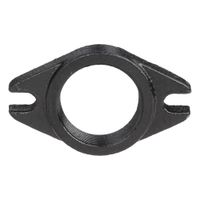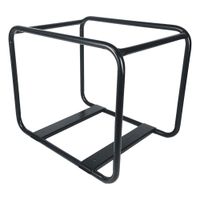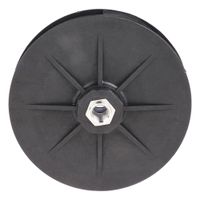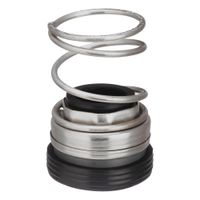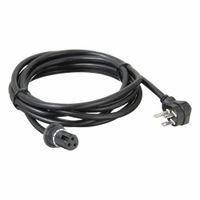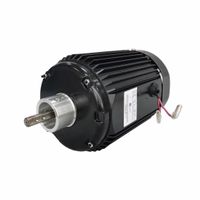Call +(254) 703 030 000 / 751 483 999 / 721 704 777
- Home
- Pumps
- Sump Sewage Utility Pumps
- Repair Parts Kits For Sump Sewage Utility Pumps
Repair Parts & Kits for Sump, Sewage & Utility Pumps
These repair parts and kits support the maintenance and repair of sump, sewage, and utility pumps to keep them in good working order. Read Less
Frequently Asked Questions
What are the common signs that a sump pump needs repair?
Common signs that a sump pump needs repair include:
1. **Unusual Noises**: Grinding, rattling, or gurgling sounds may indicate mechanical issues or debris in the pump.
2. **Constant Running**: If the pump runs continuously, it might be due to a stuck switch, a faulty float, or an undersized pump.
3. **Irregular Cycling**: Frequent on and off cycling can be caused by a float switch problem or an improperly adjusted float arm.
4. **Visible Rust or Corrosion**: Corrosion can affect the pump's efficiency and is often a sign of age or exposure to water with high mineral content.
5. **Vibrations**: Excessive vibrations during operation may suggest a damaged impeller or misalignment.
6. **Failure to Start**: If the pump doesn't start when needed, it could be due to electrical issues, a failed motor, or a stuck float switch.
7. **Water in the Basement**: If water accumulates despite the pump being operational, it may indicate a clog, a broken discharge pipe, or an inadequate pump capacity.
8. **Bad Odors**: Foul smells can result from stagnant water, mold, or a malfunctioning pump.
9. **Visible Damage**: Cracks or damage to the pump housing or components can impair functionality.
10. **Power Issues**: Frequent tripping of the circuit breaker or power loss can indicate electrical problems.
11. **Age**: Pumps over 7-10 years old may need more frequent repairs or replacement due to wear and tear.
12. **Float Problems**: A float that is stuck or not moving freely can prevent the pump from activating or deactivating properly.
Regular maintenance and inspections can help identify these issues early, preventing more significant problems.
How do I choose the right repair kit for my sewage pump?
1. **Identify the Pump Model**: Check the make and model of your sewage pump. This information is usually found on a label or plate on the pump itself. Knowing the exact model ensures compatibility with the repair kit.
2. **Determine the Problem**: Identify the specific issue with your sewage pump. Common problems include seal leaks, impeller damage, or motor issues. Understanding the problem helps in selecting a kit that addresses those specific components.
3. **Consult the Manufacturer**: Visit the manufacturer's website or contact their customer service for recommended repair kits. Manufacturers often provide kits tailored to specific models and common issues.
4. **Check Kit Contents**: Ensure the repair kit includes all necessary parts for the repair. Common components in a kit might include seals, gaskets, impellers, and bearings. Compare the kit contents with the parts you need to replace.
5. **Quality and Brand**: Opt for kits from reputable brands or the original equipment manufacturer (OEM). High-quality parts ensure durability and compatibility.
6. **Read Reviews**: Look for customer reviews and ratings of the repair kit. Feedback from other users can provide insights into the kit’s effectiveness and ease of use.
7. **Consider Professional Advice**: If unsure, consult a professional plumber or technician. They can recommend the right kit based on their experience and your pump’s condition.
8. **Budget**: While cost is a factor, prioritize quality and compatibility over price. Cheaper kits might not offer the same reliability or longevity.
9. **Availability**: Ensure the kit is readily available for purchase, either online or at local hardware stores, to avoid delays in repair.
What tools are required for repairing utility pumps?
To repair utility pumps, the following tools are typically required:
1. **Wrenches**: Adjustable wrenches, pipe wrenches, and socket wrenches are essential for loosening and tightening nuts, bolts, and fittings.
2. **Screwdrivers**: A set of flathead and Phillips screwdrivers is necessary for removing and securing screws on pump components.
3. **Pliers**: Needle-nose pliers, slip-joint pliers, and locking pliers help in gripping, twisting, and cutting wires or small components.
4. **Multimeter**: This tool is used to test electrical components and circuits for continuity, voltage, and resistance.
5. **Pipe Cutters**: Used for cutting through metal or plastic pipes that are connected to the pump.
6. **Sealant and Tape**: Pipe thread sealant and Teflon tape are used to ensure leak-proof connections.
7. **Hammer and Mallet**: Useful for gently tapping components into place or loosening stuck parts.
8. **Bearing Puller**: Required for removing bearings from the pump shaft without causing damage.
9. **Allen Keys/Hex Keys**: These are used for tightening or loosening hexagonal socket screws.
10. **Lubricants**: Grease and oil are used to lubricate moving parts and prevent wear.
11. **Gasket Scraper**: For removing old gasket material from surfaces to ensure a proper seal with new gaskets.
12. **Flashlight or Work Light**: Provides illumination in dark or hard-to-reach areas.
13. **Safety Gear**: Gloves, safety glasses, and ear protection are essential for personal safety during repairs.
14. **Replacement Parts**: Having spare parts like seals, gaskets, and bearings on hand is crucial for efficient repairs.
15. **Manuals and Diagrams**: Reference materials specific to the pump model can guide the repair process.
These tools and materials are essential for diagnosing issues, disassembling, repairing, and reassembling utility pumps effectively.
How often should sump pump maintenance be performed?
Sump pump maintenance should be performed at least once a year. However, for optimal performance and to prevent potential failures, it is advisable to check the sump pump more frequently, especially in areas prone to heavy rainfall or flooding. Quarterly inspections are recommended to ensure the pump is in good working condition.
During maintenance, several key tasks should be performed:
1. **Inspect the Power Source**: Ensure the pump is connected to a reliable power source and that the cord is in good condition. Test the backup power supply, if available, to ensure it functions during power outages.
2. **Clean the Pump and Pit**: Remove any debris, dirt, or sediment from the sump pit and pump inlet screen to prevent clogs. This helps maintain efficient water flow and prevents damage to the pump.
3. **Test the Pump**: Pour water into the sump pit to trigger the pump. Observe the pump's operation to ensure it activates, pumps water effectively, and shuts off properly. This test confirms the pump's responsiveness and efficiency.
4. **Check the Discharge Line**: Inspect the discharge line for obstructions, leaks, or damage. Ensure it directs water away from the foundation and is not frozen or clogged, especially during colder months.
5. **Examine the Float Switch**: Ensure the float switch moves freely and is not obstructed. A malfunctioning float switch can prevent the pump from activating when needed.
6. **Inspect for Corrosion or Wear**: Check for signs of rust, corrosion, or wear on the pump components. Replace any damaged parts to prevent future failures.
By adhering to a regular maintenance schedule, homeowners can extend the lifespan of their sump pump, reduce the risk of basement flooding, and ensure the system operates efficiently when needed.
Can I repair a sewage pump myself, or should I hire a professional?
Repairing a sewage pump can be a complex and potentially hazardous task, and whether you should attempt it yourself or hire a professional depends on several factors.
Firstly, assess your technical skills and experience. If you have a strong background in plumbing or mechanical repairs, you might be able to handle minor issues such as unclogging the pump or replacing a float switch. However, sewage pumps involve electrical components and exposure to waste, which can pose safety risks. Ensure you have the necessary tools and protective gear, and always disconnect the power supply before attempting any repairs.
Consider the nature of the problem. Simple issues like blockages or minor leaks might be manageable for a DIY enthusiast. However, more complex problems such as motor failures, electrical issues, or significant damage to the pump housing typically require professional expertise. Misdiagnosing or improperly repairing these issues can lead to further damage, increased repair costs, or even health hazards due to sewage exposure.
Evaluate the cost and time involved. While DIY repairs might save money upfront, they can be time-consuming and may not be cost-effective if the problem recurs or worsens. Professionals have the experience and tools to diagnose and fix issues efficiently, often providing warranties on their work.
Finally, consider local regulations and warranties. Some areas require licensed professionals for certain plumbing repairs, and attempting repairs yourself might void any existing warranties on the pump.
In conclusion, if you are confident in your skills and the problem is minor, you might attempt a DIY repair. However, for complex issues or if you lack experience, hiring a professional is advisable to ensure safety, compliance, and a long-lasting solution.
What are the most common parts that need replacement in utility pumps?
The most common parts that need replacement in utility pumps include:
1. **Seals and Gaskets**: These components are crucial for preventing leaks. Over time, they can wear out due to constant pressure and exposure to various fluids, necessitating regular replacement to maintain pump efficiency and prevent fluid leakage.
2. **Impellers**: Impellers are responsible for moving the fluid through the pump. They can become damaged or worn due to cavitation, corrosion, or the presence of abrasive materials in the fluid, leading to reduced performance and the need for replacement.
3. **Bearings**: Bearings support the rotating shaft of the pump and reduce friction. They can wear out due to continuous operation, misalignment, or inadequate lubrication, resulting in noise, vibration, and eventual failure if not replaced.
4. **Shafts**: The pump shaft transmits power from the motor to the impeller. It can suffer from wear, bending, or breakage due to misalignment, excessive vibration, or mechanical overload, requiring replacement to restore proper function.
5. **O-rings**: These are used to create a tight seal between different parts of the pump. They can degrade over time due to chemical exposure or temperature fluctuations, leading to leaks and the need for replacement.
6. **Motor Components**: Parts such as brushes, windings, and capacitors in electric motors can wear out or fail, especially in pumps that operate continuously or under harsh conditions, necessitating repair or replacement.
7. **Valves**: Check valves and other types of valves can become clogged, corroded, or damaged, affecting the pump's ability to control fluid flow and pressure, thus requiring replacement.
Regular maintenance and inspection can help identify these issues early, allowing for timely replacement and minimizing downtime.
How do I troubleshoot a malfunctioning sump pump?
1. **Check Power Supply**: Ensure the sump pump is plugged in and the circuit breaker or fuse is not tripped. Reset if necessary.
2. **Inspect Float Switch**: Verify the float switch is not stuck or obstructed. Adjust or clean it to ensure it moves freely.
3. **Examine Discharge Pipe**: Check for clogs or obstructions in the discharge pipe. Clear any debris to ensure proper water flow.
4. **Test the Pump**: Pour water into the sump pit to see if the pump activates. If it doesn’t, the pump may be faulty.
5. **Listen for Unusual Noises**: Unusual noises may indicate mechanical issues. Grinding or rattling sounds could mean debris is caught in the impeller.
6. **Check for Air Lock**: Ensure the pump is not air-locked by drilling a small relief hole in the discharge pipe just above the pump.
7. **Inspect for Leaks**: Look for leaks in the pump or discharge line. Tighten connections or replace damaged parts.
8. **Clean the Sump Pit**: Remove debris and sediment from the sump pit to prevent clogs and ensure efficient operation.
9. **Examine Check Valve**: Ensure the check valve is installed correctly and functioning to prevent backflow.
10. **Assess Pump Capacity**: Ensure the pump is adequate for the volume of water. Consider upgrading if it frequently fails to keep up.
11. **Review Installation**: Verify the pump is installed correctly, with the proper slope and alignment of the discharge pipe.
12. **Consult the Manual**: Refer to the manufacturer’s manual for specific troubleshooting tips and maintenance guidelines.
13. **Professional Help**: If issues persist, contact a professional plumber or technician for further diagnosis and repair.
